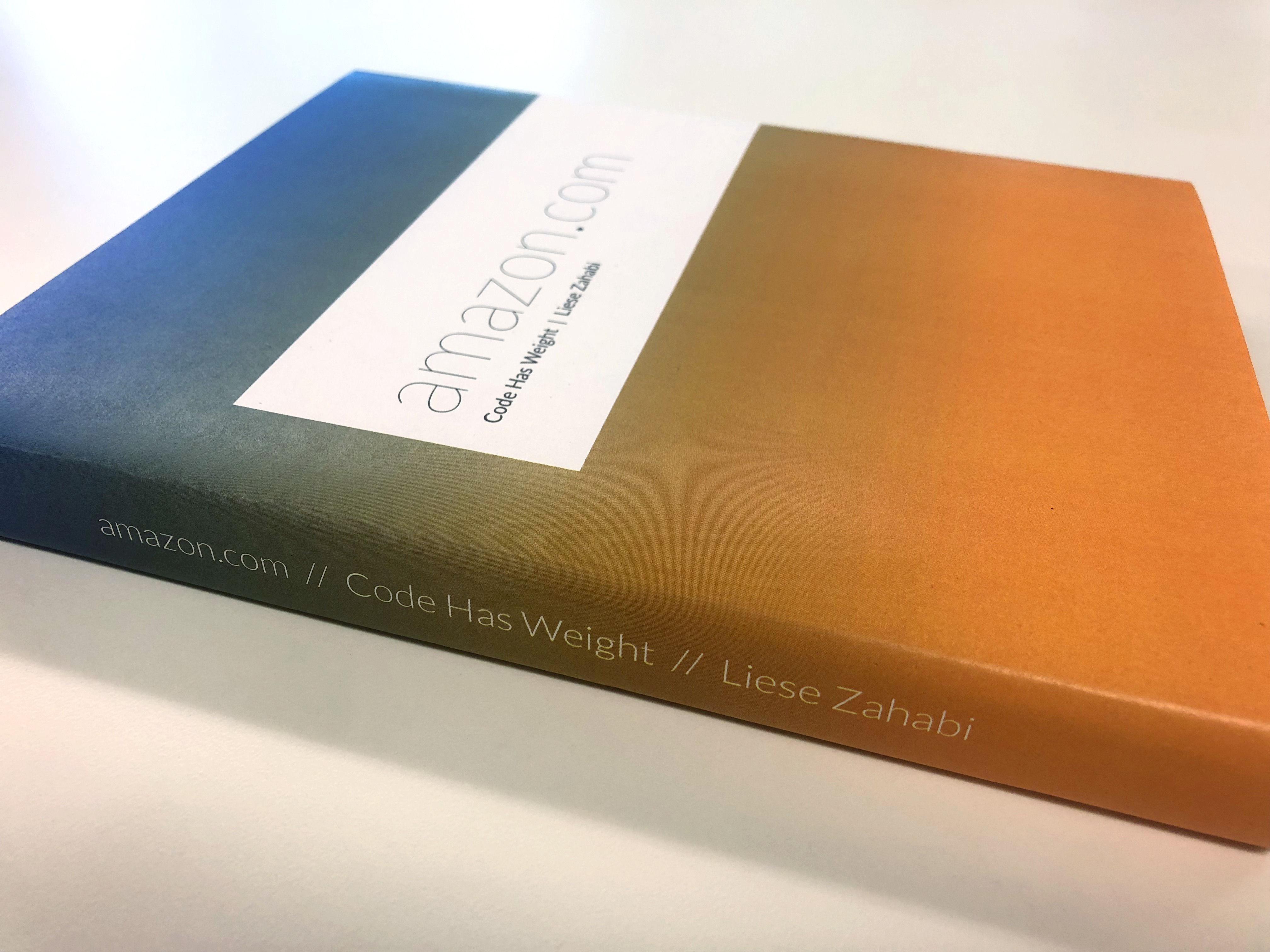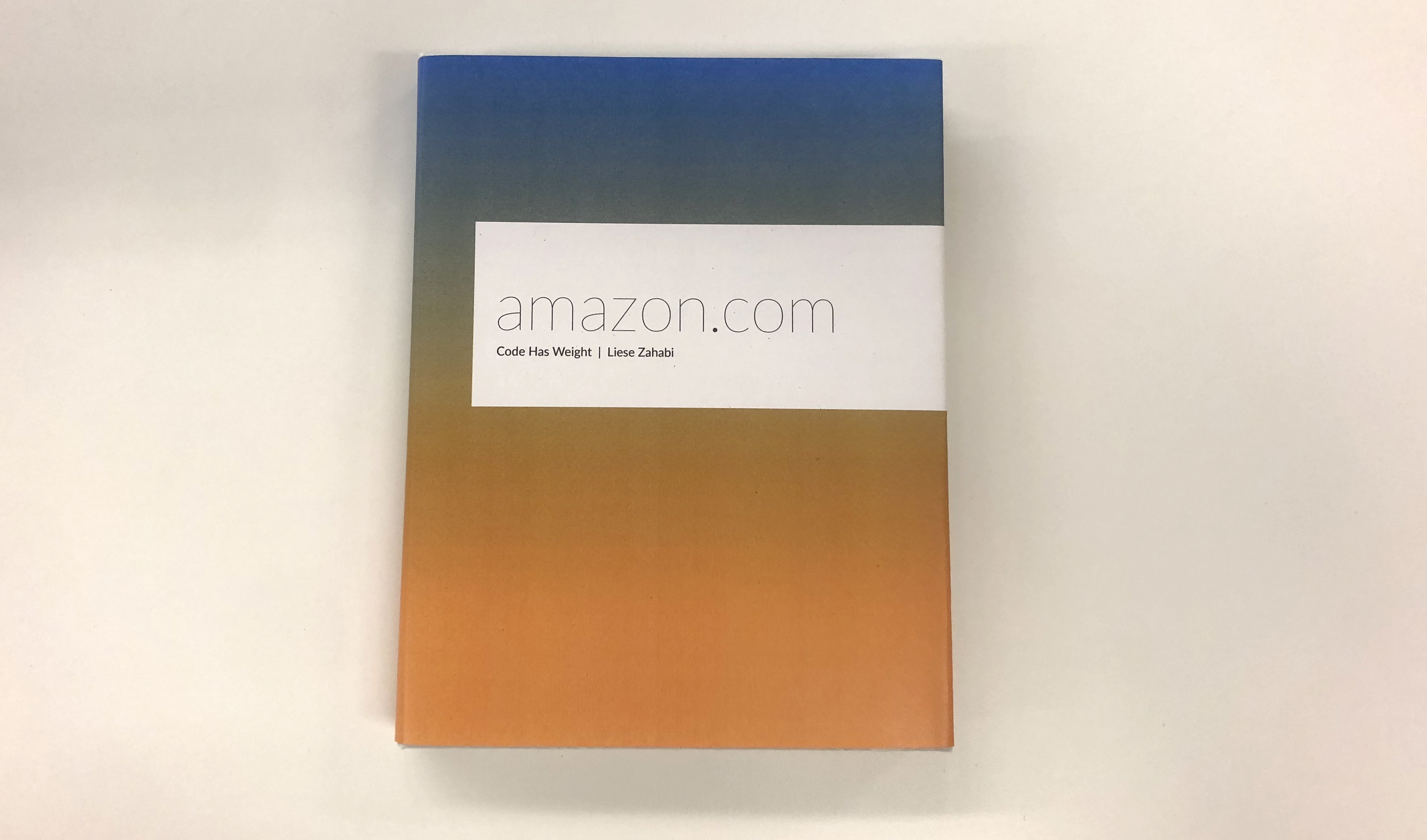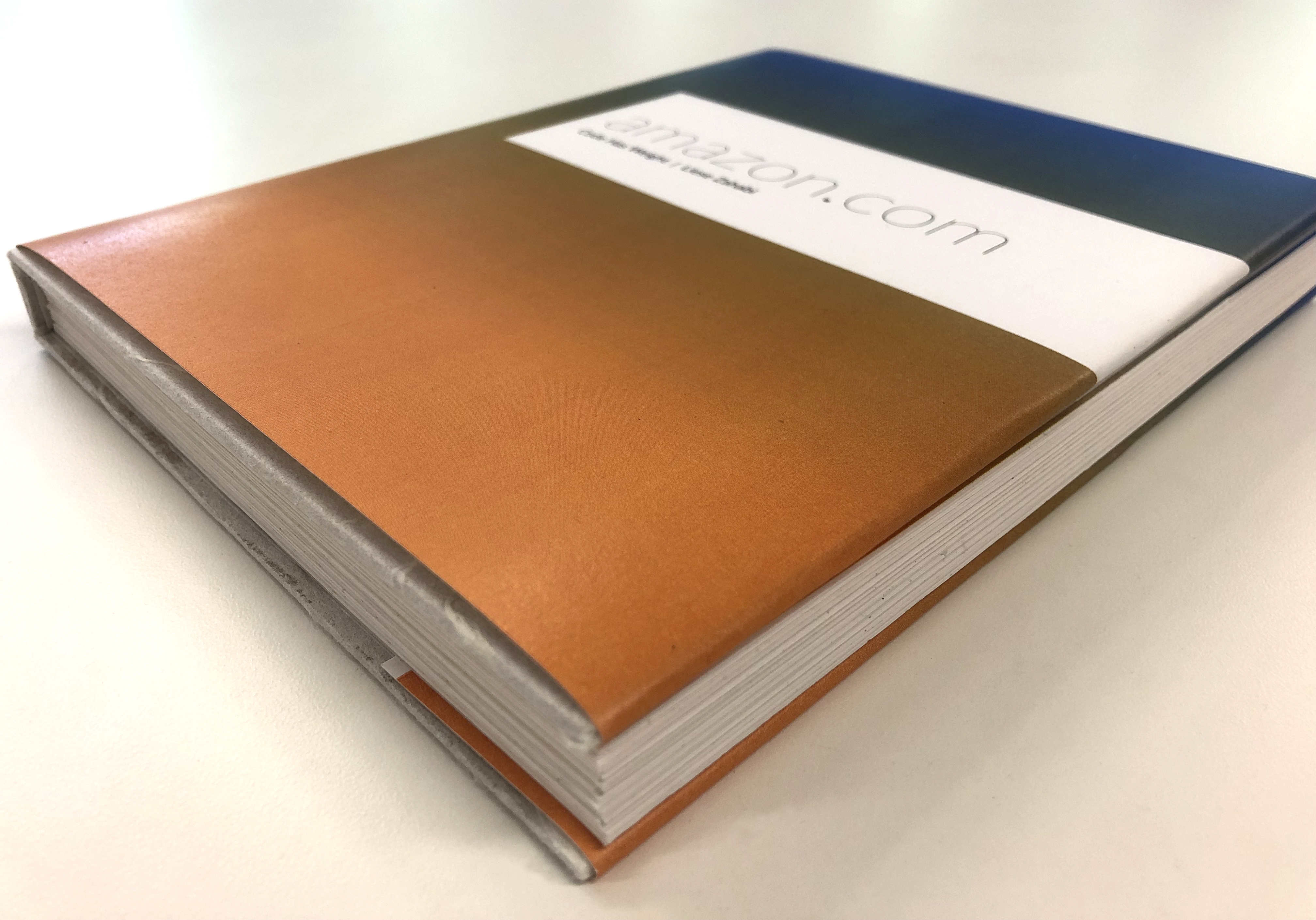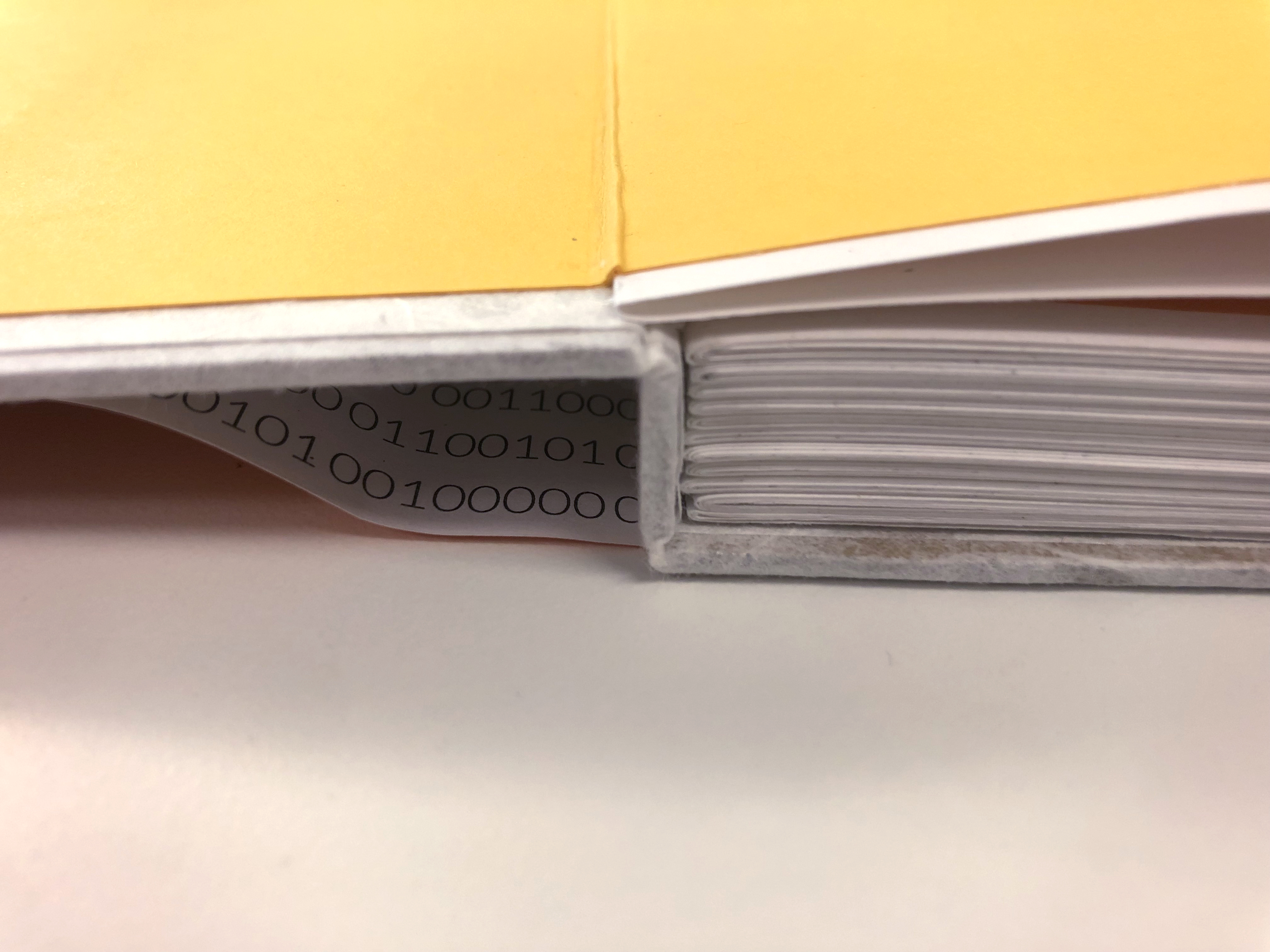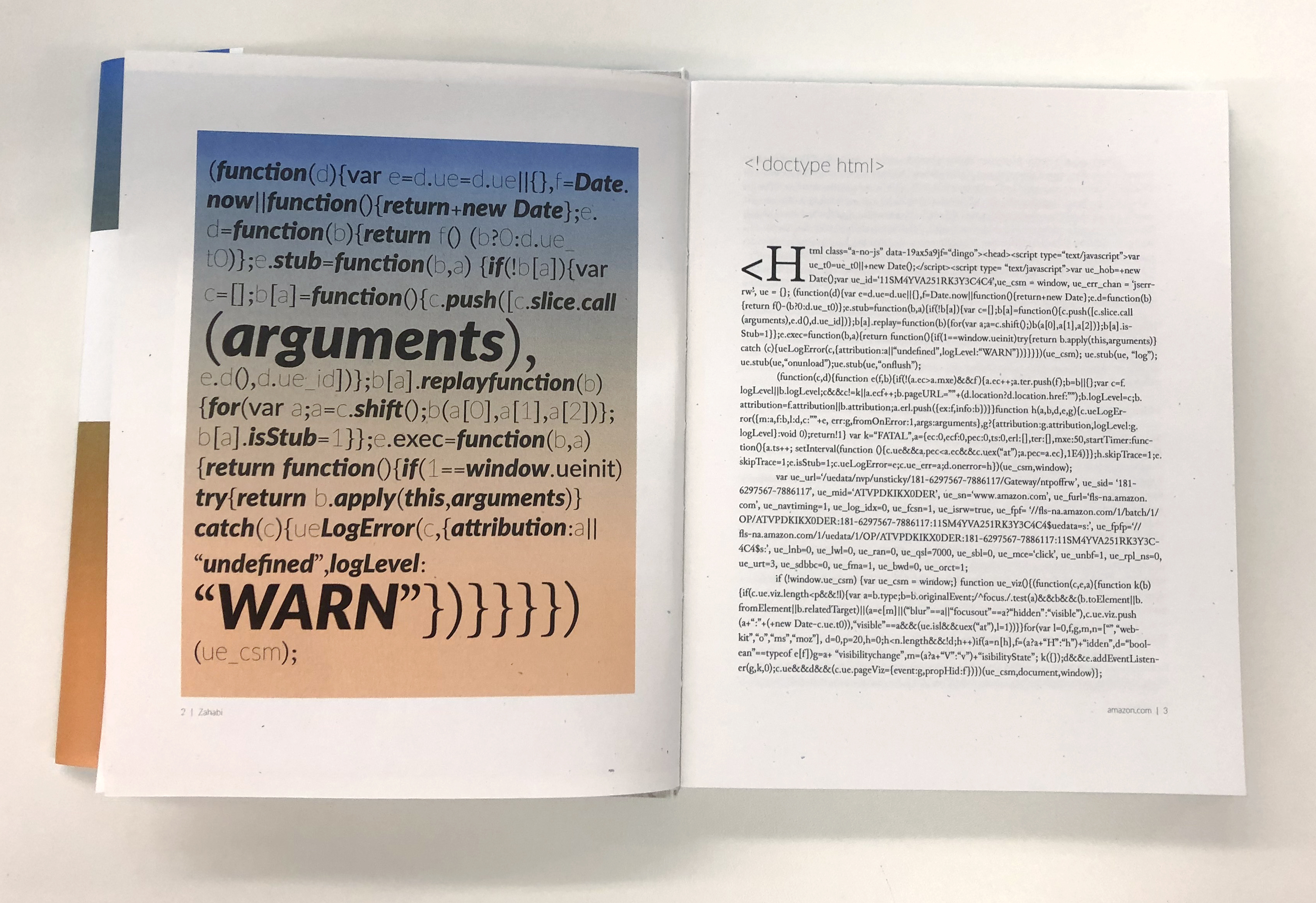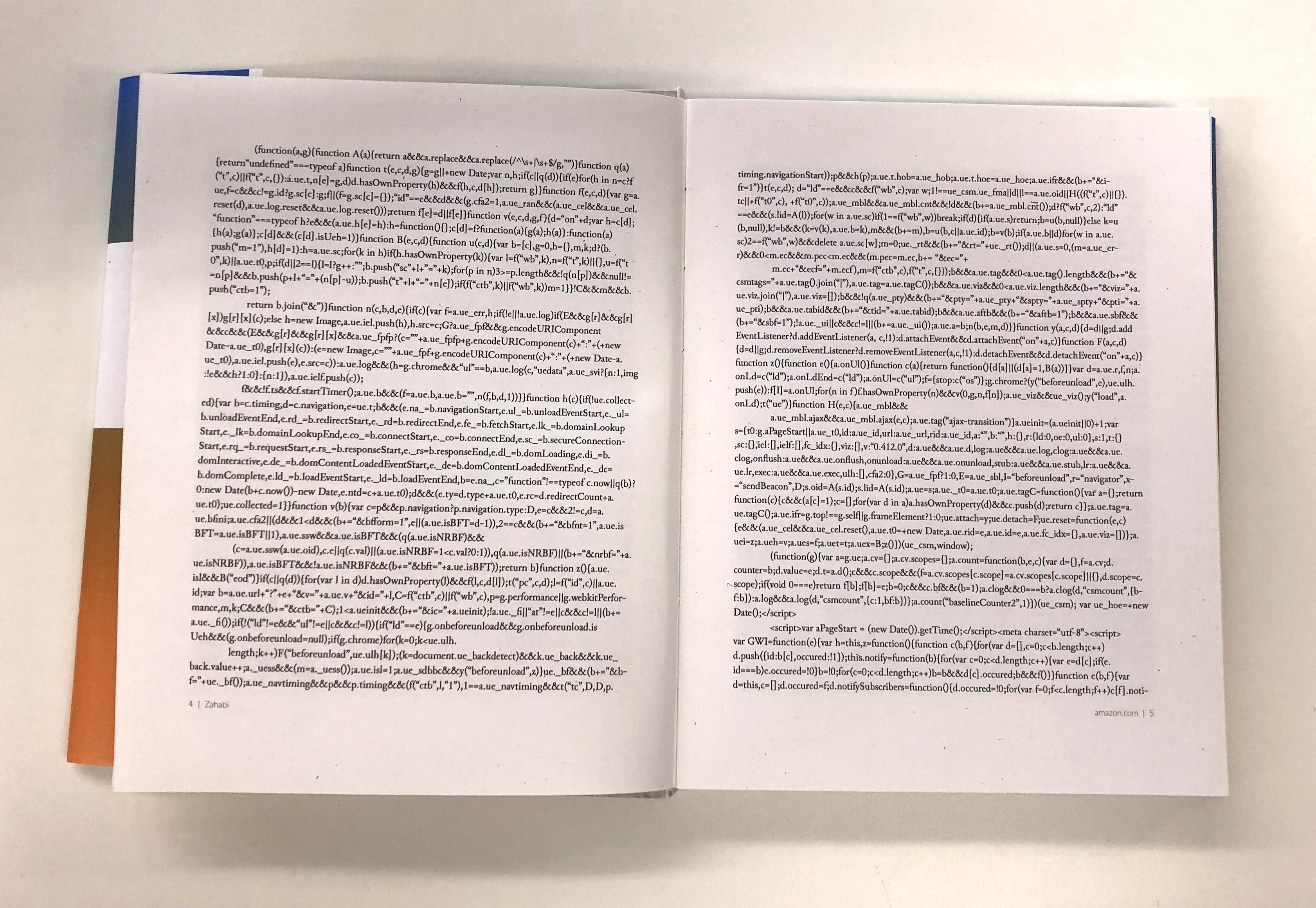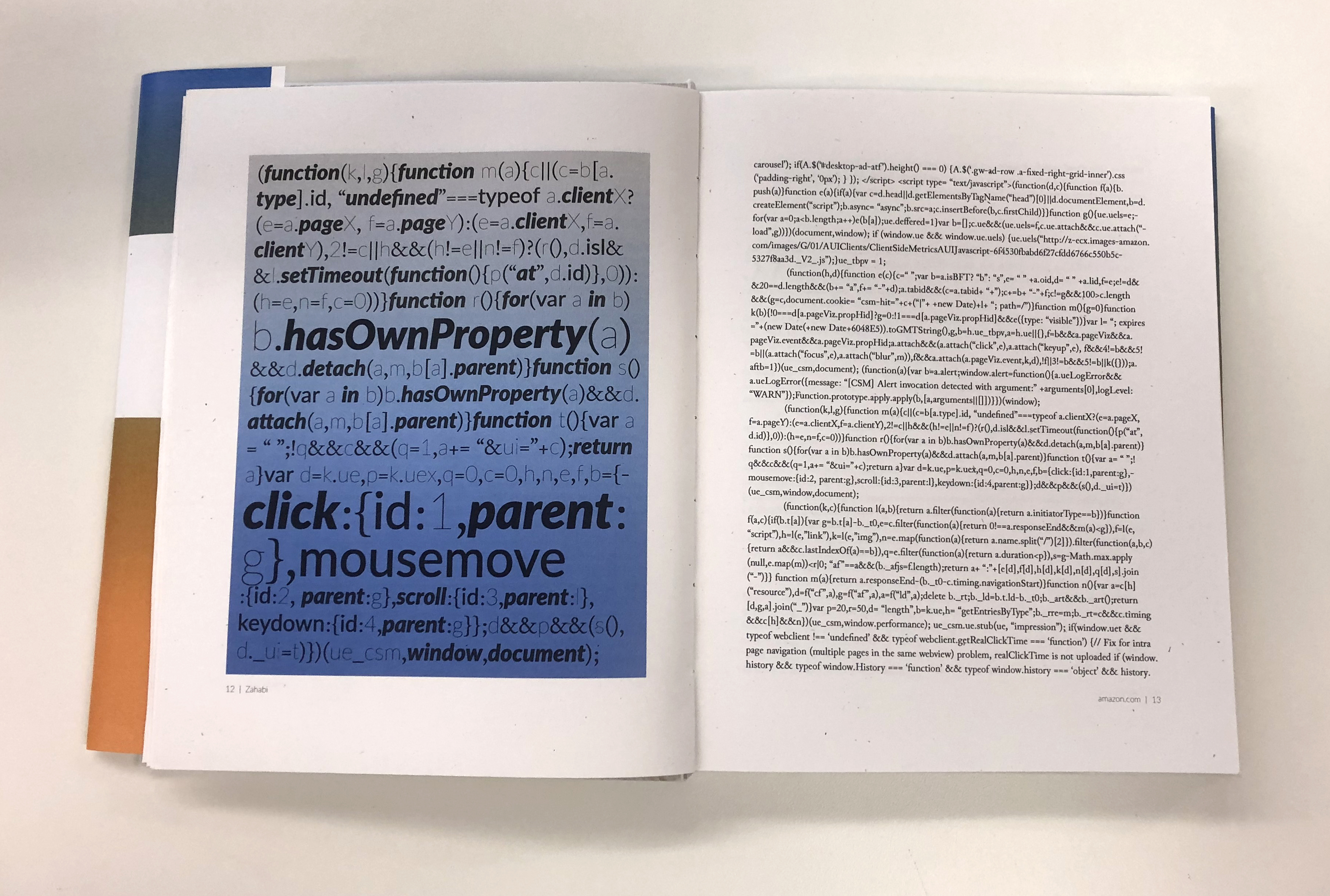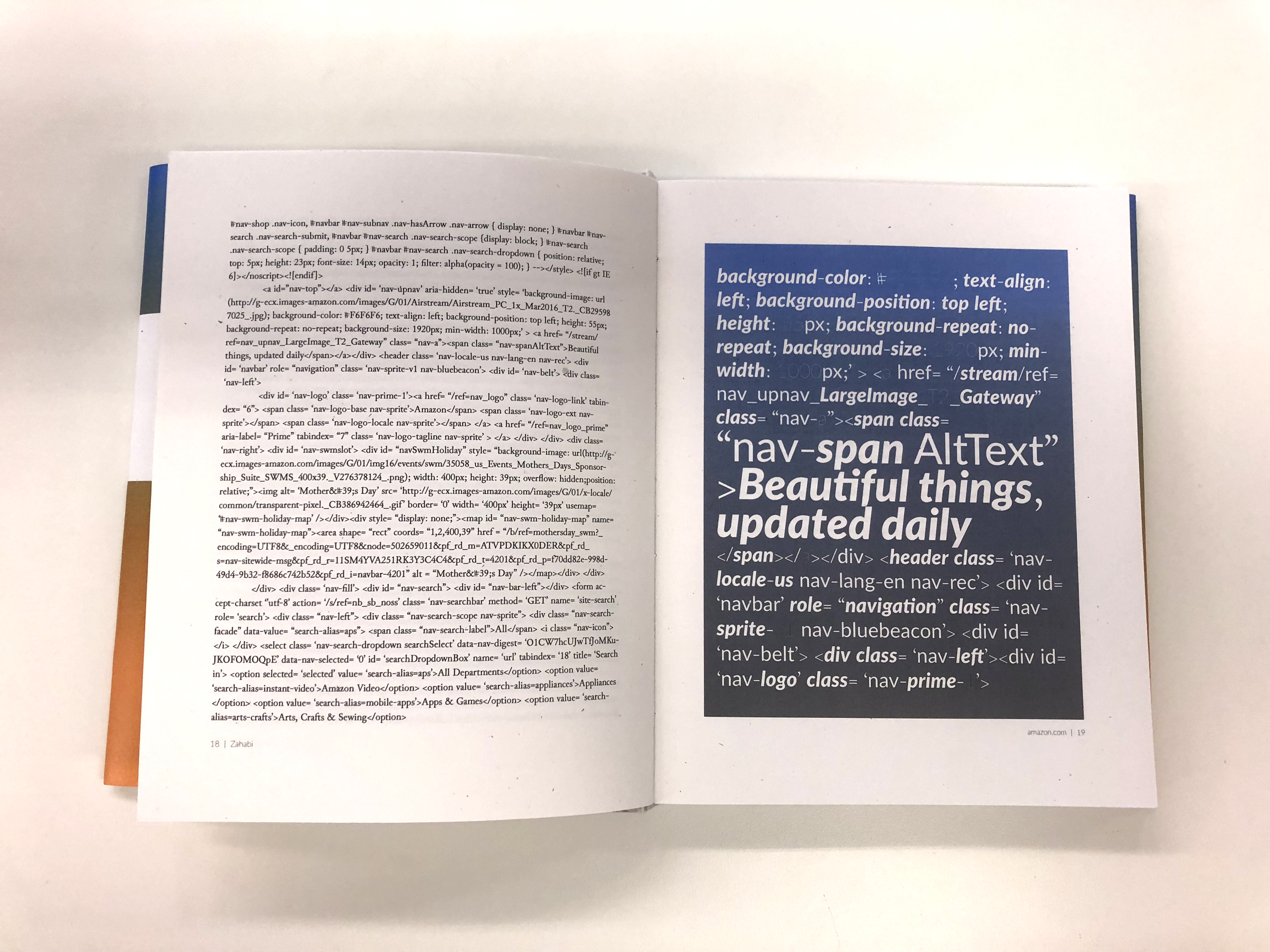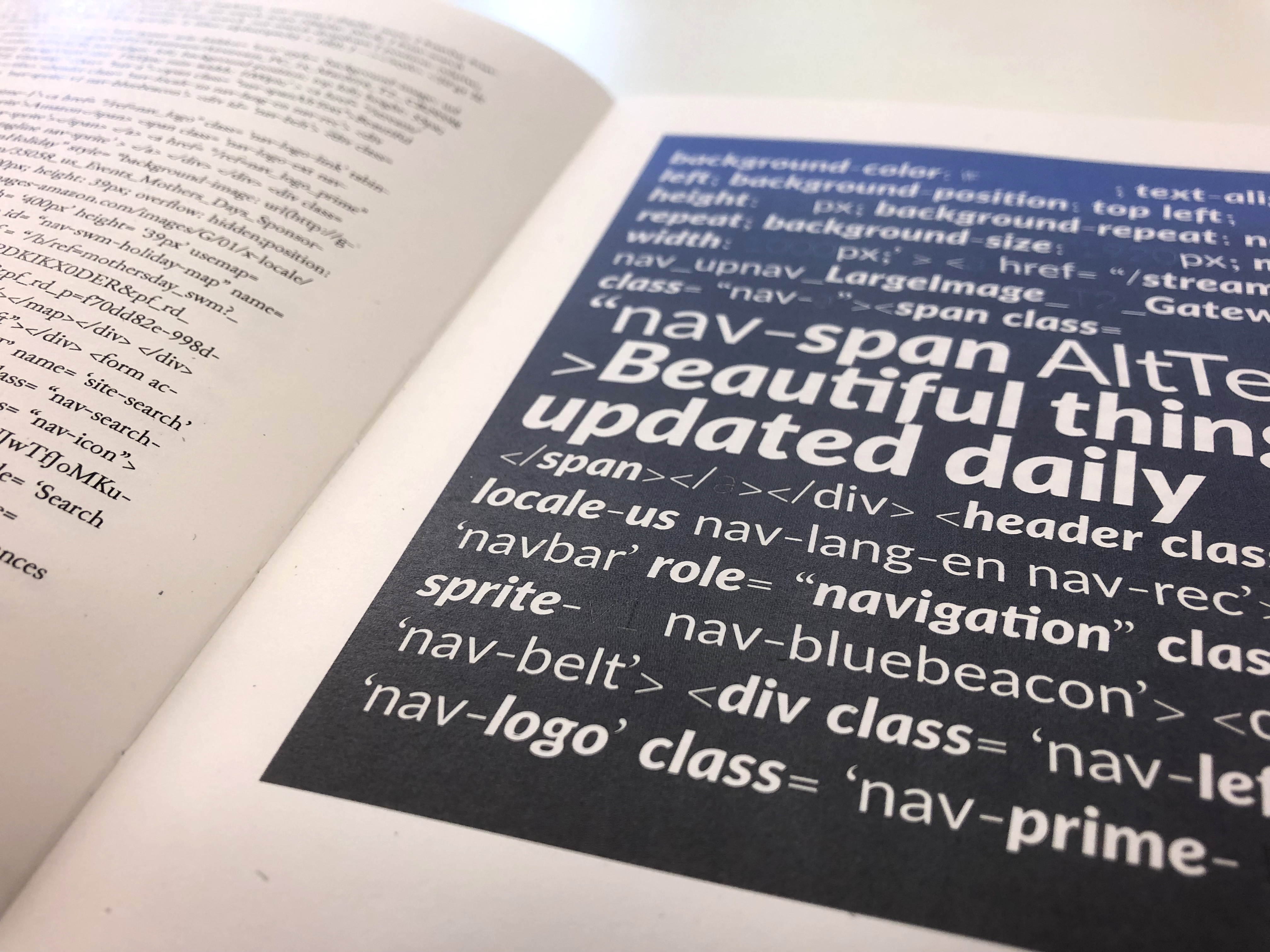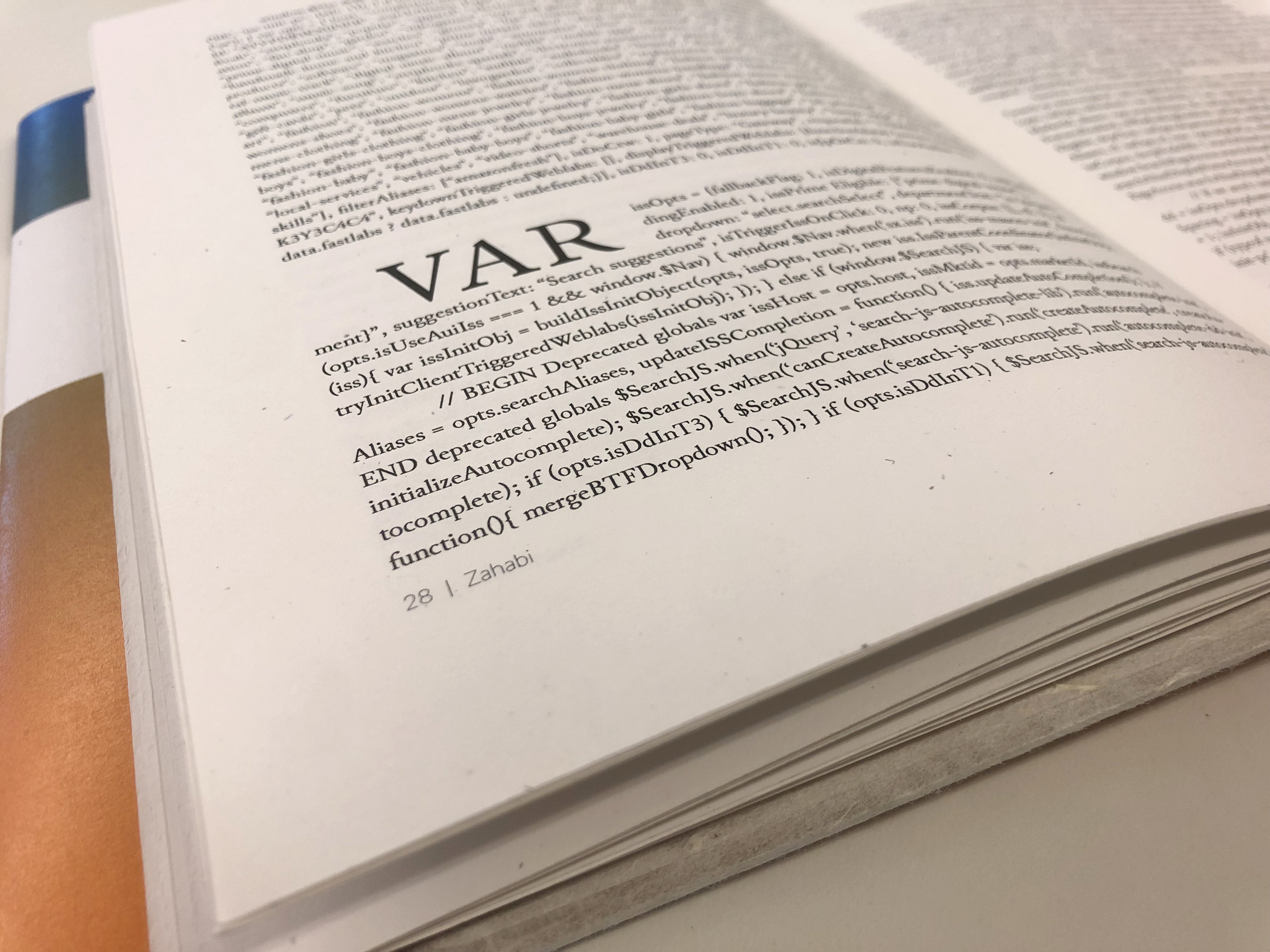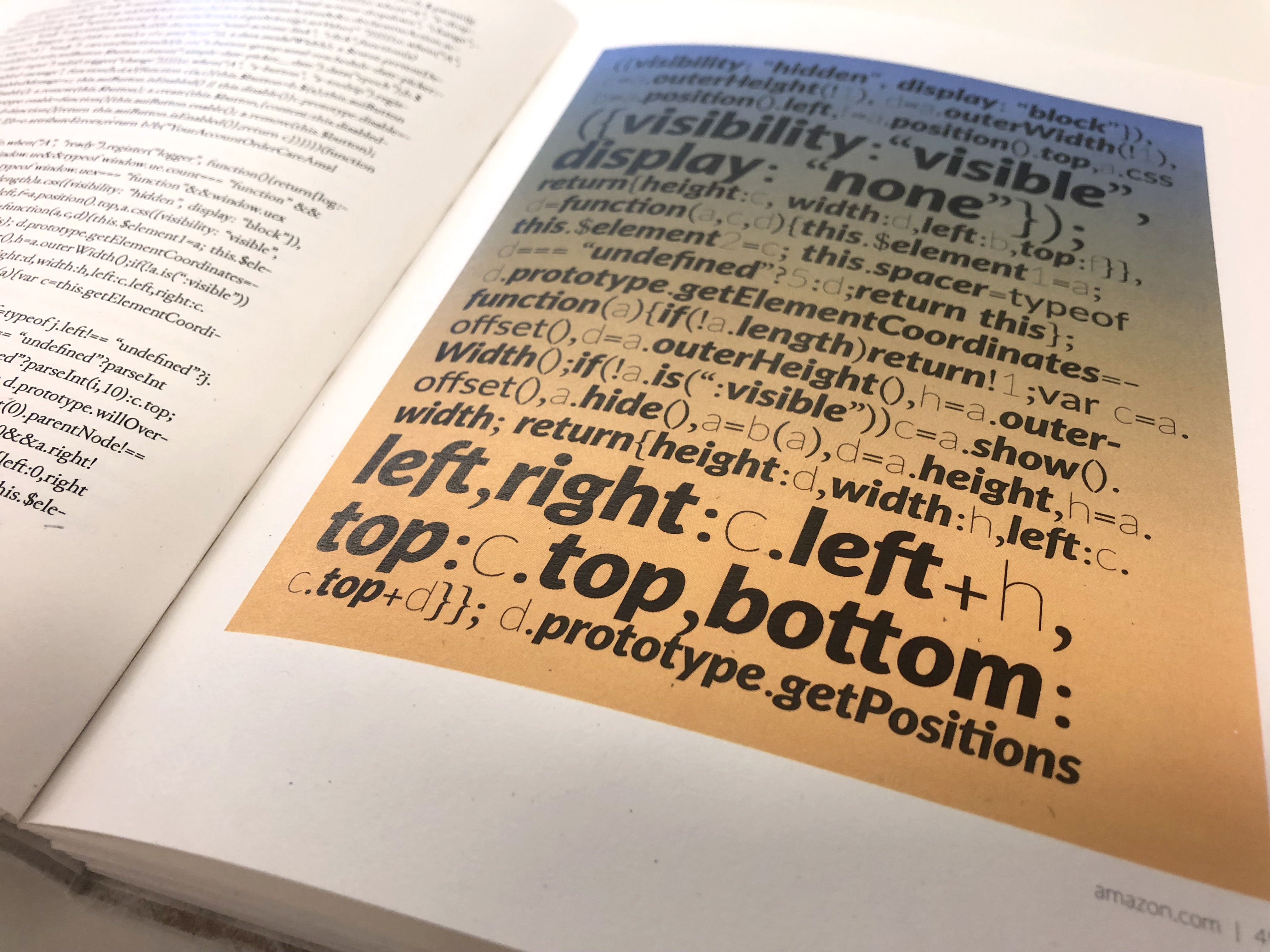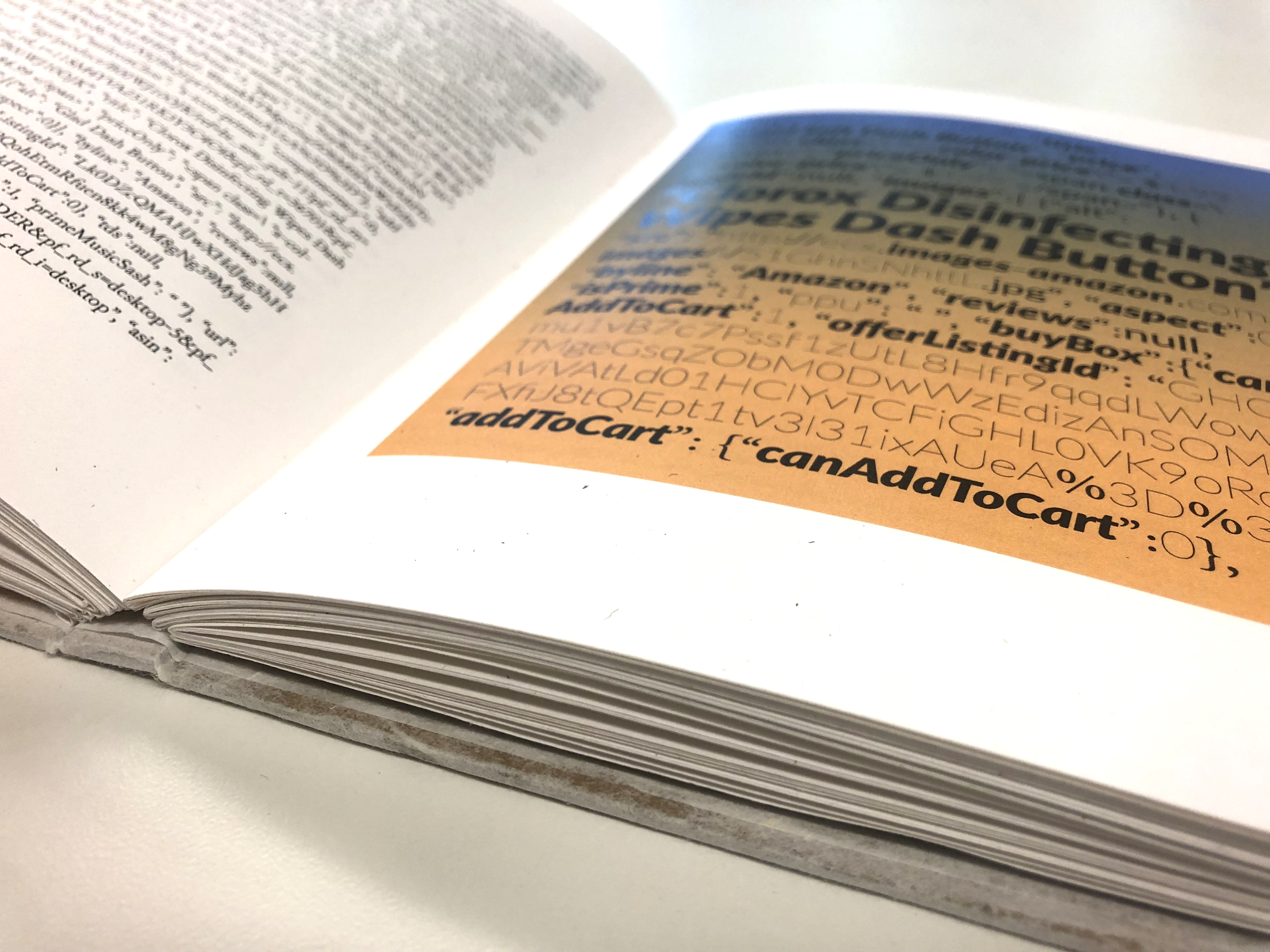“I want to stand as close to the edge as I can without going over. Out on the edge you see all the kinds of things you can’t see from the center.” —Kurt Vonnegut
Human experience is increasingly mediated by computer code, particularly through the ubiquity of laptops, smartphones and other devices connected to the Internet. We use digital interfaces to communicate, shop, search for information, find a mate, listen to music, conduct banking, cook, count calories, and entertain ourselves. These interfaces and the operating systems that help run them are all created with code: strings of numbers, symbols and letters corresponding to specific programming languages. This code remains largely hidden from the average user, quietly running our devices and altering the way we experience the world. It is an obfuscated layer floating beneath our conscious understanding of daily life—we breathe it, in and out, never noticing how its very framework shapes our behavior.
The statistics associated with Internet and technology use are staggering: to date there are over 3.3 billion users of online technology, and over 1 billion total websites, as reported by Internet Live Stats. That same site also reports that there are 54,897 Google searches conducted and 125,366 YouTube videos viewed in just one typical second.[1] These digital technologies are only possible through complex code, allowing data to be processed quickly, helping to create graphical based interfaces that are user-focused and intuitive, and providing unprecedented connection and conflation.
Yet most users of these technologies neither see nor understand this underlying layer of code. According to Code.org, “there are currently 543,145 open computing jobs nationwide…[and] last year, only 42,969 computer science students graduated into the workforce.”[2] Several other websites and online articles cry out to society, encouraging more people, especially young people, to learn how to write code.[3] Regardless of the myriad of causes cited—from a lack of K-12 education in computer science, to the ways in which programming is taught at the college level, to the insular and sometimes unwelcoming CS communities—there is a discernible gap between the number of people in the U.S. who can code and the number of good programmers currently needed by industry. Most people living in the U.S. who use digital technology every day, cannot read nor write in code. While this situation is likely preferable for most—after all, helping non-specialists and non-programmers use computers and digital technology with ease underlies the impetus for the creation of the graphical user interface, and the core philosophy behind the wildly popular Apple products—it does mean that this layer of information, the code itself, is only visualized through an end product.
I argue that the code itself is beautiful. The patterns created by the grammar and syntax of coding languages offer a satisfying repetition, and the use of server side scripting, databases, and personalized information can leave bread-crumbs and surprises throughout the long lines of text. Code is data that includes instructions for its own construction: content and form are bundled together in pure abstraction which can be viewed as such in a text editor, or can be enjoyed as the final output in a web browser or as the elements of an operating system or piece of software on a computer screen.
This project consists of a set of five hand-bound books. Each book contains the source code from one well-known and popular website: Amazon, Facebook, Google, Netflix, and YouTube. The text has been carefully typeset, following the conventions of typography and book design, including: chapter headings, drop caps, folios and page numbers, and illustrations constructed of snippets of nearby code, typeset in multiple fonts and styles to further illuminate the patterns and anomalies within. The book covers and illustrations feature simple color gradients, built from the colors featured in the brands of each website.
These books give the code a different physical form, untethering it from the screen, and placing it in the spatial, semantic, and cultural context of the traditional printed book. Using the grammar and syntax of typography and book design, I am allowing a user/reader to experience the data as content meant to be read, word by word, symbol by symbol. My goal is to provoke a conversation around our relationship with the largely hidden force of code, and to explicitly confront the reader/user with the abstractions and qualities of this important component of our modern world.
[1] Internet Live Stats: Internet Usage & Social Media Statistics. Real Time Statistics Project, 2016. Web. 23 June 2016.
[2] “Promote Computer Science.” Code.org. Code.org, 2015. Web. 23 June 2016.
[3] Pavley, John. “Technical Literacy: Can Everyone Learn to Code?” The Huffington Post. TheHuffingtonPost.com, 26 July 2013. Web. 23 June 2016.
Raja, Tasneem. “We Can Code It! Why Computer Literacy Is Key to Winning the 21st Century.” Mother Jones. Mother Jones, 2014. Web. 23 June 2016.

